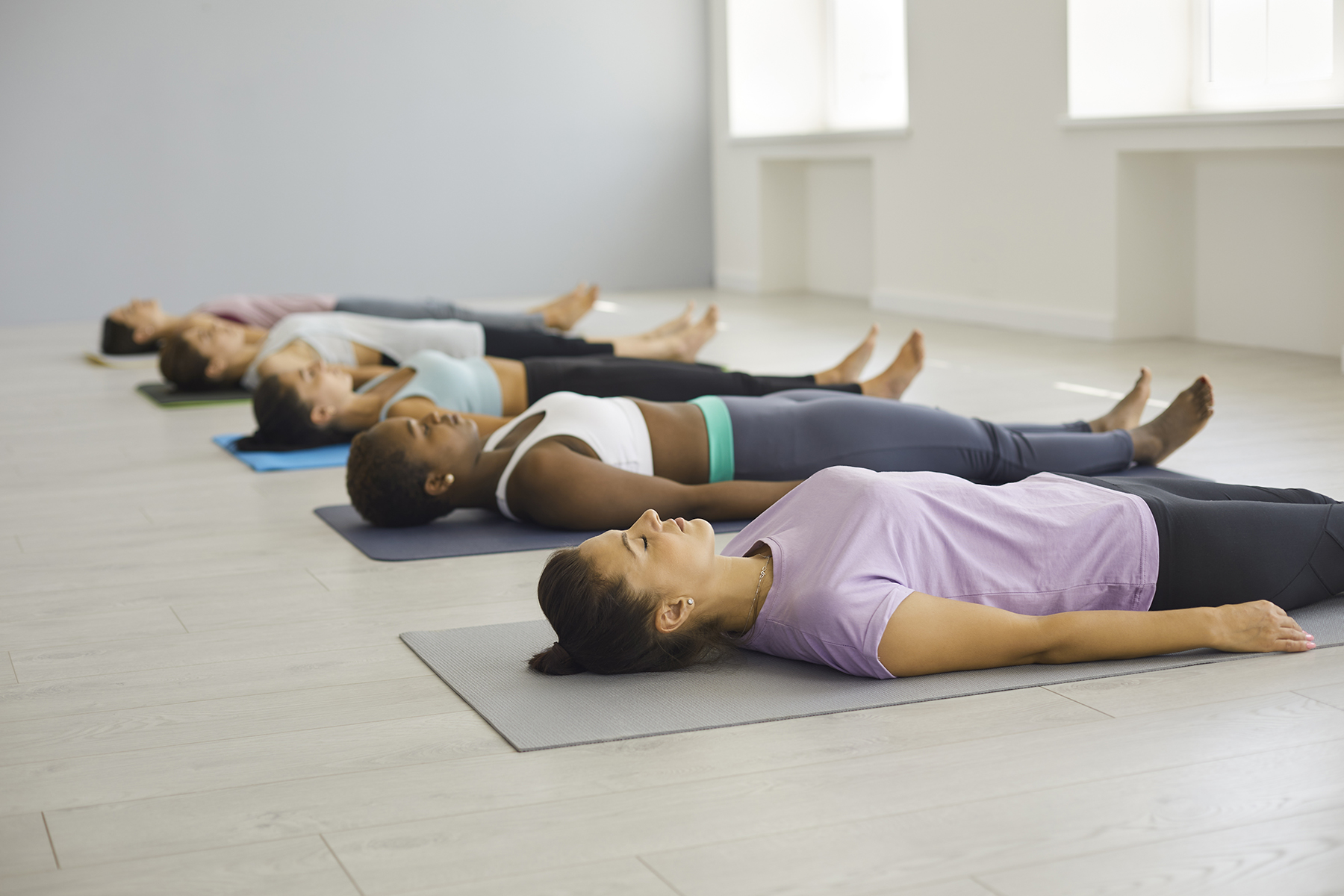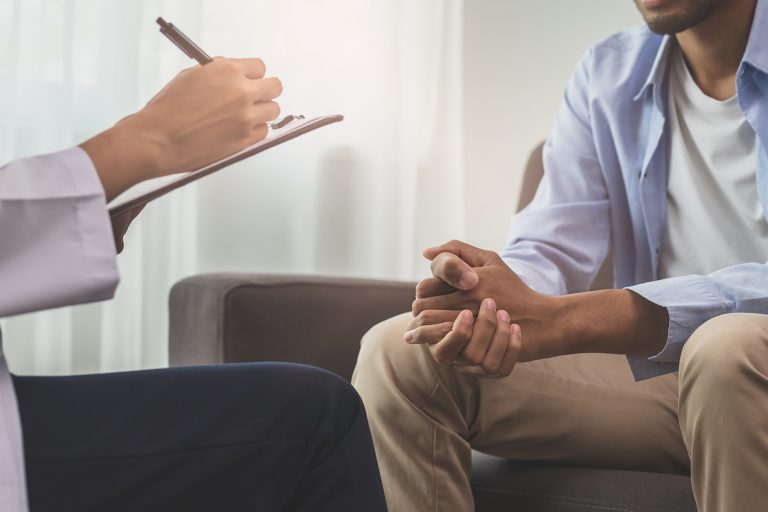At The Bridge we believe in taking a 360⁰ approach to addiction recovery, combining therapy and the 12-step programme with exercise, nutrition and practices which help to relieve stress and tension and promote wellbeing. To expand the options for our clients, we have added another fantastic practitioner to our team at The Bridge – Shelly Loder.
Shelly is a highly experienced and certified Tension and Trauma Releasing Exercises (TRE®) practitioner, as well as a certified yoga teacher, who was the first American to be certified in Neurogenic Yoga back in 2014. She is one of the few providers of TRE® in Spain and passionate about the power of TRE® to self soothe and self-regulate the nervous system, which in turn can ease cravings, find feelings of relief and restore balance and optimism.
As TRE® isn’t widely known, we spoke to Shelly to find out more about this very effective tool in addiction recovery.
Q. Hi Shelly and welcome to The Bridge, can you tell our readers a little about yourself?
A. Hi there, I’m very happy to have joined the team at The Bridge. I am from the San Francisco Bay Area of California in the U.S. and came to live on the Costa del Sol in early 2000s. My husband grew up here, so we came here to get married and had our children, living here for 10 years before moving back to the States in 2010. We returned here a year and a half ago and we’re very happy to be back.
My background is in professional dance and choreography, which I worked in for over 25 years. The past 10 years I have shifted more focus into teaching yoga and trauma release. I am a certified Experienced Yoga Teacher at the 500 hour, teaching a variety of yoga styles. I was the first American to be certified in Neurogenic Yoga back in 2014, a trauma/tension release method that is the sister modality to TRE®, which I teach at The Bridge and for which I am certified as well.
I am living in recovery from alcoholism and addiction and am 11 years clean and sober, so I know exactly what our clients are going through and facing ahead of them. I also have Complex Post Traumatic Stress Disorder or a ‘dual diagnosis’ regarding mental health like many other addicts. It is my opinion that those with dual diagnosis must treat their mental health as a priority in order to maintain long term recovery and so I am passionate about the work I am doing at The Bridge, supporting addicts through their recovery with TRE®.
Q. Please tell us more about TRE® and what exactly it is.
A. TRE® (Tension/Trauma Releasing Exercises) is a revolutionary technique in trauma healing and stress reduction. It is a simple, gentle, and profound practice that safely induces the body’s innate therapeutic tremoring mechanism that re-establishes balance in the autonomic nervous system.
This shaking response in humans, much the same as the instinctual shaking in animals, is the nervous system’s way of discharging long-held tension and trauma – the stored bodily imprint, or unconscious muscle contraction in order to restore the body to wholeness.
Through a simple set of six “exercises” to fatigue certain muscle groups, I then help the client to gently induce the body’s shaking mechanism into the psoas muscles. These are the large muscles that connect your top and bottom halves and run through your hips to connect into your lower back. From there the body recognizes this innate release and will take over on its own, finding your own unique tension patterns and stored trauma imprints to release. The practitioner also has the capacity to start and stop the process easily throughout a session in order to regulate the release.
Regular practice of TRE® can help EVERYBODY! I have personally experienced the benefits of TRE® in my own life as well as seen wonderful results in my clients ranging from survivors of sexual/physical abuse, addicts and family members of addicts, survivors of mass shootings, veterans, athletes, children with ADD/ADHD, the elderly community, people dealing with chronic stress or pain, and the list goes on!
Reported benefits with regular practice include:
• less anxiety/depression, mood swings
• discharge of buried emotional and physical trauma
• relief from symptoms of P.T.S.D.
• improved sleep
• greater emotional resiliency
• improved sense of feeling grounded and focused
• more energy and endurance
• less relationship conflict
• freedom from symptoms of fibromyalgia
• reduced muscle and back pain
• relief from chronic medical conditions
• increased flexibility and mobility
• lessened anxiety surrounding serious illness
Q. What is the application for addiction recovery?
I love TRE® and Neurogenic Yoga for addiction recovery for many reasons. One is for the many benefits listed above.
But also, the body is the container of all our sensations and emotions. The body replays trauma over and over as somatic signs and symptoms when the body memory gets stuck. These sensations and emotions are often what the addict is either consciously or unconsciously trying to cope with or move away from.
Every person with addiction issues has trauma in their background whether it be something specific like developmental trauma, or obvious abuse or vicarious trauma we take in from others and our world experience—the very cycle of addiction is in itself traumatic to body, to brain, etc..
TRE® and Neurogenic Yoga are helpful for recovery because they help to self soothe and self-regulate the nervous system which in turn can ease cravings, find feelings of relief, and restore balance and optimism.
It is a great addition to a person in recovery’s self-care tool box, for it is essential to learn how to unwind and relax in a healthy way to maintain long term recovery. In addition, TRE® integrates well with other therapeutic modalities because it supports a deep neuro-physiological relaxation and the softening of defensive patterns. This helps a client get more from the other treatments and therapy sessions they are receiving during their stay in an inpatient rehabilitation centre.
Through regular practice the client can learn to integrate physical sensations, emotions and memories while maintaining connection to oneself and the instructor. Perhaps the greatest aspect of the neurogenic tremoring of TRE® is once the clients have learned to self-regulate and remain grounded, they can continue this practice on their own–anytime, anywhere! This is a great healing tool to offer to the client’s family and/or support group as well!
My purpose at The Bridge is to teach the client about what TRE® or neurogenic tremoring can do for them in recovery with regular practice. The client and I will work together in one-on-one sessions during their stay at The Bridge with option to include more sessions if they should choose to continue with The Bridge’s aftercare programs. I provide a safe environment to help guide the client in learning how to self-regulate and ground through the process.
Q. If an addict doesn’t have access to a TRE® practitioner where they are, can you give them any tips for releasing tension and trauma in other ways?
There are lots of things they can do at home or in a class to release trauma and tension and deal with stress.
The first thing is to learn to breathe properly! Mindful breathing, breathwork such as the various forms of pranayama in yoga, or just taking some deep breaths and controlling the breath is incredibly beneficial.
Meditation, even for a couple of minutes a day, or twice a day, over time will make a big impact on your life.
I can also not say enough about the ancient wisdom of yoga. Get yourself into a class and keep trying until you find a place that suits you. And it that’s not for you, at the very least incorporate exercise into your life.
I am also a big supporter of somatic therapies such as somatic experiencing in processing trauma.
Last but not least one must also prioritize daily self-care (not self-absorbed) strategies—contact me through The Bridge and I will give you some ideas on how to do that!
Thank you Shelly for those wonderful tips and the insight into TRE.
TRE® in combination with addiction recovery treatments at The Bridge
We have brought together a highly experienced and qualified team of professionals at The Bridge to offer our clients the very best chance of long-term recovery from addiction. Our bespoke and personalised addiction treatment programs combine different therapies and treatments to our core programme to cater to each individual who comes to us for help. We are very pleased to now be able to offer TRE® alongside CBT, group and one-to-one therapy, 12-step meetings, as well as family therapy and support and much more.
Our private rehabilitation centre in Marbella, offers a safe, comfortable and discreet place to get to the bottom of your issues. Our luxury rehab facilities, excellent team of professionals from different disciplines, and our passionate belief that everyone can recover from addiction is a powerful combination. Our aim is to build your mental and physical strength and resilience, and work with you to get to the root of the problem, while taking you away from temptation and breaking negative patterns and habits.
Please contact us to find out more about The Bridge and how we can help you, or read our blog on how we work at The Bridge.




